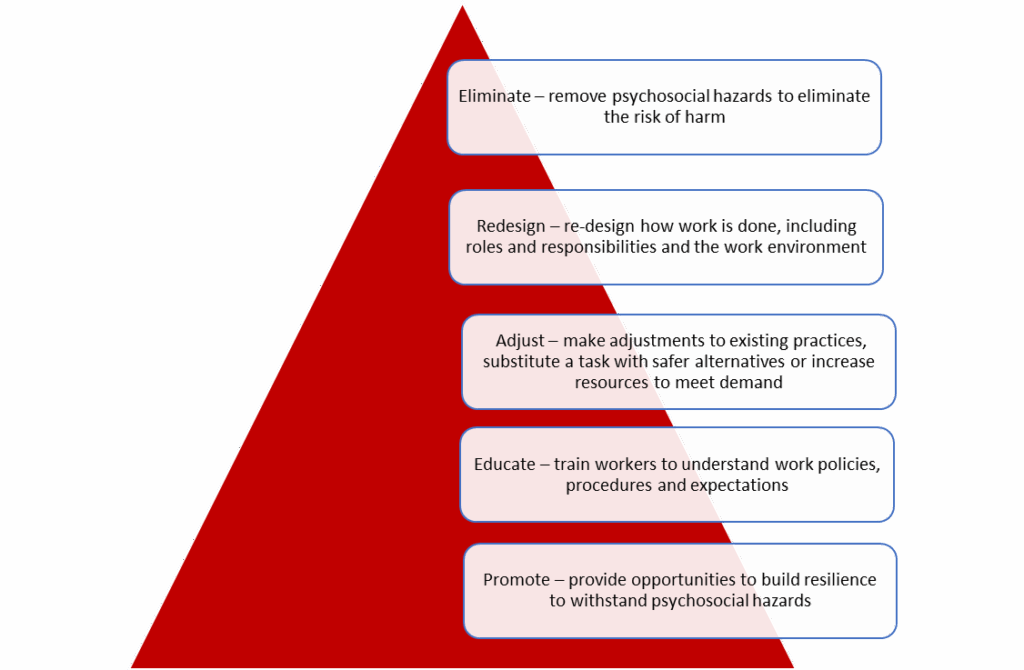I recently attended a HSR (Health and Safety Representative) Psychosocial Train the Trainer course. Firstly, I would like to thank DEWR (Department of Employment and Workplace Relations) for making it possible and to EpiGroup for the delivery of an insightful program. It was a fantastic opportunity to gain a greater understanding and to reinforce my existing knowledge.
In relation to the management of work health and safety we are concerned about those psychosocial hazards that are work related or work enhanced. These are the factors we can control. It useful to make a correlation to how we manage physical hazards. For example, we cannot control a person injuring their back whist lifting at home. However, we can control lifting activities that occur in the workplace that may cause injury. We can also control those that may exacerbate an existing injury.
Work related psychosocial factors can be grouped into the following broad categories as defined in the regulations:
- Those that relate to the design or management of work for example: lack of role clarity, poor organisational change management, poor organisational justice, job demands, poor support, low job control, job insecurity, inadequate reward and recognition
- Those that are impacted by the work environment for example: fatigue, remote or isolated work
- Those that relate to plant at the workplace for example poor physical environment, intrusive surveillance
- Those caused by workplace interactions and behaviours for example traumatic events or material, violence and aggression, harassment and sexual harassment, bullying conflict or poor workplace relationships or interactions.
Psychosocial factors can also be protective in nature for example: high job demands plus good support = decreased risk of harm.
Once we have identified our risk factors we need to assess the level of risk. When determining the level of risk associated with psychosocial hazards, we should consider severity, duration and frequency. This deviates from the traditional risk matrix approach of risk = consequence x likelihood. It may be useful to compare this with how risk is evaluated for chemical exposure.
To manage psychosocial hazards we need to consider a variety of controls.

We can also re-think the traditional hierarchy of controls when addressing psychosocial hazards. An example of a revised hierarchy of control for psychosocial hazards could be:

This is just a snap shot of some of the learnings from this program. I will include some of the HSR specific learnings in a future post.
